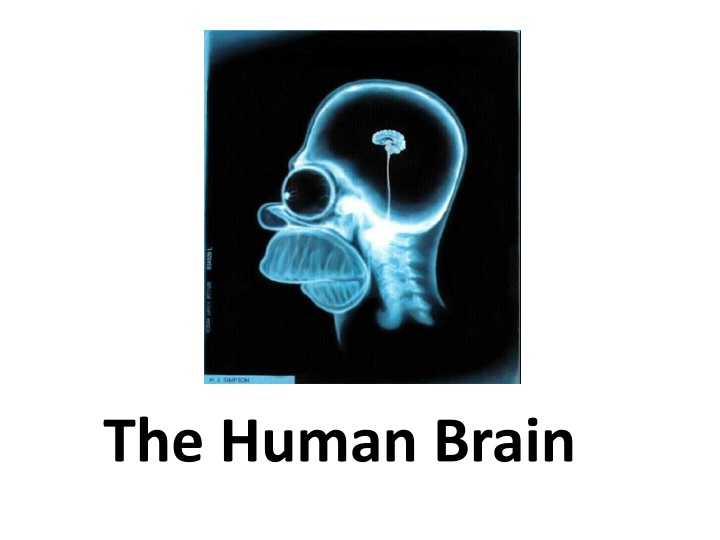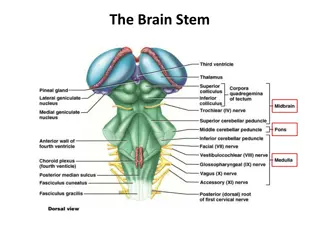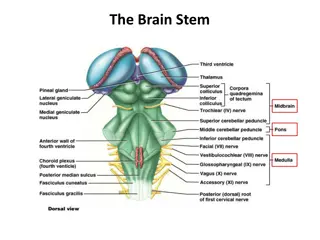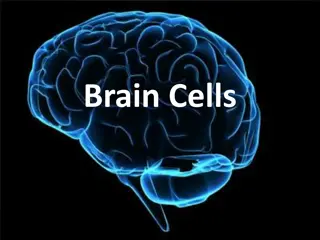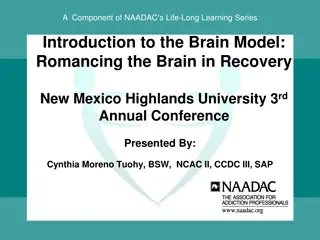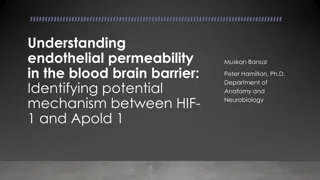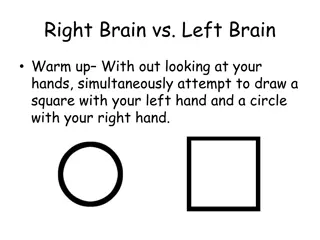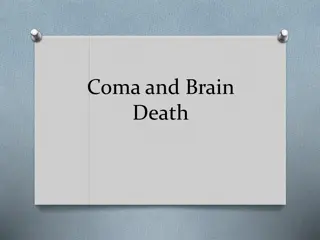The Human Brain
Uncover the fascinating details of the human brain, from its structural components like the cerebrum and cerebral cortex to the functions of lobes like frontal and parietal. Dive into the sensory and motor cortices, the prefrontal cortex, and more.
Download Presentation

Please find below an Image/Link to download the presentation.
The content on the website is provided AS IS for your information and personal use only. It may not be sold, licensed, or shared on other websites without obtaining consent from the author.If you encounter any issues during the download, it is possible that the publisher has removed the file from their server.
You are allowed to download the files provided on this website for personal or commercial use, subject to the condition that they are used lawfully. All files are the property of their respective owners.
The content on the website is provided AS IS for your information and personal use only. It may not be sold, licensed, or shared on other websites without obtaining consent from the author.
E N D
Presentation Transcript
Cerebrum -The largest division of the brain. It is divided into two hemispheres, each of which is divided into four lobes. Cerebrum Cerebrum Cerebellum http://williamcalvin.com/BrainForAllSeasons/img/bonoboLH-humanLH-viaTWD.gif
Cerebral Cortex - The outermost layer of gray matter making up the superficial aspect of the cerebrum. Cerebral Cortex CerebralCortex
Cerebral Features: Gyri Elevated ridges winding around the brain. Sulci Small grooves dividing the gyri Central Sulcus Divides the Frontal Lobe from the Parietal Lobe Fissures Deep grooves, generally dividing large regions/lobes of the brain Longitudinal Fissure Divides the two Cerebral Hemispheres Transverse Fissure Separates the Cerebrum from the Cerebellum Sylvian/Lateral Fissure Divides the Temporal Lobe from the Frontal and Parietal Lobes
Gyri (ridge) Sulci (groove) Fissure (deep groove)
Sensory Cortex Sensory cortex is the main sensory receptive area for the sense of touch. Like other sensory areas, there is a map of sensory space in this location, called the sensory homunculus. Motor Cortex Motor cortex is a term that describes regions of the cerebrum involved in the planning, control, and execution of voluntary motor functions. Helpful Information to Know Cortex means outermost layer of brain, referred to as gray matter
Prefrontal Cortex Controls our planning of complex cognitive behavior, personality expression, decision making, and moderating social behavior
Lobes of the Brain (4) Frontal Parietal Occipital Temporal * Note: Occasionally, the Insula is considered the fifth lobe. It is located deep to the Temporal Lobe.
Lobes of the Brain - Frontal The Frontal Lobe of the brain is located deep to the Frontal Bone of the skull. It plays an integral role in the following functions/actions: - Memory Formation - Emotions - Decision Making/Reasoning - Personality - Voluntary Movements Investigation (Phineas Gage) (Investigation: Phineas Gage) Investigation (Phineas Gage)
Lobes of the Brain - Parietal Lobe The Parietal Lobe of the brain is located deep to the Parietal Bone of the skull. It plays a major role in the following functions/actions: - Process stimuli related to touch, pressure, temperature, and pain - Spatial awareness and perception (Proprioception - Awareness of body/ body parts in space and in relation to each other)
Lobes of the Brain Temporal Lobe The Temporal Lobes are located on the sides of the brain, deep to the Temporal Bones of the skull. They play an integral role in the following functions: - Hearing - Organization/Comprehensionof language - Information Retrieval (Memory and Memory Formation)
Lobes of the Brain Occipital Lobe The Occipital Lobe of the Brain is located deep to the Occipital Bone of the Skull. Its primary function is the many different aspects of vision
Further Investigation Phineas Gage: Phineas Gage was a railroad worker in the 19th century living in Cavendish, Vermont. One of his jobs was to set off explosive charges in large rock in order to break them into smaller pieces. On one of these instances, the detonation occurred prior to his expectations, resulting in a 42 inch long, 1.2 inch wide, metal rod to be blown right up through his skull and out the top. The rod entered his skull below his left cheek bone and exited after passing through the anterior frontal lobe of his brain. Frontal Frontal
Remarkably, Gage never lost consciousness, or quickly regained it (there is still some debate), suffered little to no pain, and was awake and alert when he reached a doctor approximately 45 minutes later. He had a normal pulse and normal vision, and following a short period of rest, returned to work several days later. However, he was not unaffected by this accident. Learn more about Phineas Gage: http://en.wikipedia.org/wiki/Phineas_Gage Frontal Frontal
Extension Question Q: Recalling what you have just learned regarding the frontal lobe, what possible problems or abnormalities may Gage have presented with subsequent to this type of injury (remember the precise location of the rod through his brain)? A:Gage s personality, reasoning, and capacity to understand and follow social norms had been diminished or destroyed. He illustrated little to no interest in hobbies or other involvements that at one time he cared for greatly. After the accident, Gage became a nasty, vulgar, irresponsible vagrant. His former employer, who regarded him as "the most efficient and capable foreman in their employ previous to his injury," refused to rehire him because he was so different. Frontal Frontal
